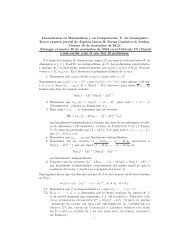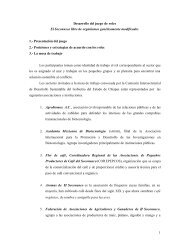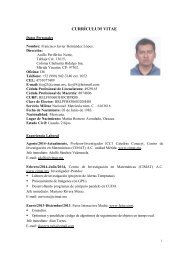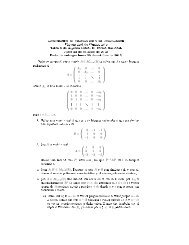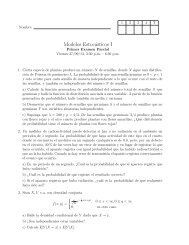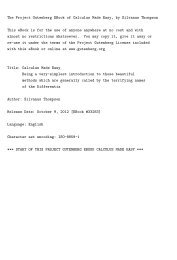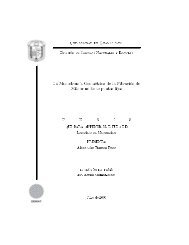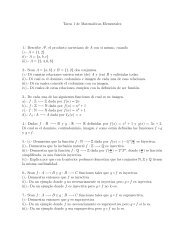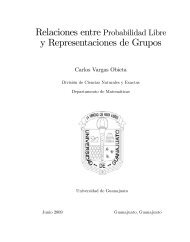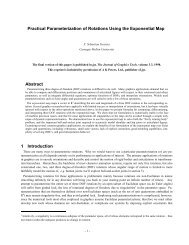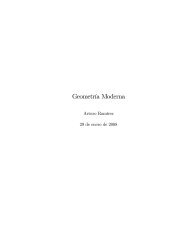S-integral points on hyperelliptic curves Homero Renato Gallegos ...
S-integral points on hyperelliptic curves Homero Renato Gallegos ...
S-integral points on hyperelliptic curves Homero Renato Gallegos ...
- No tags were found...
You also want an ePaper? Increase the reach of your titles
YUMPU automatically turns print PDFs into web optimized ePapers that Google loves.
We need the following assumpti<strong>on</strong>s for all steps:a. The knowledge of at least <strong>on</strong>e rati<strong>on</strong>al point P 0 <strong>on</strong> C.b. The knowledge of a Mordell–Weil basis for J(Q) where J is the Jacobian of C.For the sec<strong>on</strong>d step we also need to assume that the can<strong>on</strong>ical height ĥ :J(Q) → R is explicitly computable and that we have explicit upper and lower boundsfor the differenceµ 1 ≤ h(D) − ĥ(D) ≤ µ 2. (1.0.2)For step (II’)-(a) we further require that generators of J(Q) are divisors supported by<str<strong>on</strong>g>points</str<strong>on</strong>g> <strong>on</strong> C(R) <strong>on</strong>ly.The assumpti<strong>on</strong> that we know a point <strong>on</strong> the curve brings simplificati<strong>on</strong>s to ourmethod. As remarked in [15], if we do not know any rati<strong>on</strong>al point <strong>on</strong> the curve, it ispossible that there are no rati<strong>on</strong>al <str<strong>on</strong>g>points</str<strong>on</strong>g> at all. This can be proved using the techniquesof Bruin and Stoll [9, 10, 11].We have made most of the necessary computati<strong>on</strong>s with the computati<strong>on</strong>al algebrasystem MAGMA [5]. Some computati<strong>on</strong>s have been performed with the Mathematicasystem [52].The thesis is arranged as follows. Chapter 2 outlines the existing methods forthe computati<strong>on</strong> of the bounds for the height difference, and the computati<strong>on</strong> of theMordell–Weil group. It c<strong>on</strong>sists <strong>on</strong> standard material, but it is needed to set up notati<strong>on</strong>which will be used throughout the thesis. Chapter 3 is c<strong>on</strong>cerned with the computati<strong>on</strong>of the upper bounds for the size of the S-<str<strong>on</strong>g>integral</str<strong>on</strong>g> <str<strong>on</strong>g>points</str<strong>on</strong>g> <strong>on</strong> the affine model 1.0.1.It also explains how <strong>on</strong>e can completely determine all the S-<str<strong>on</strong>g>integral</str<strong>on</strong>g> <str<strong>on</strong>g>points</str<strong>on</strong>g> using thevariant of the Mordell–Weil sieve found in [15]. Chapter 5 deals with the reducti<strong>on</strong> of theupper bounds obtained in Chapter 3 for the particular case of <str<strong>on</strong>g>integral</str<strong>on</strong>g> <str<strong>on</strong>g>points</str<strong>on</strong>g> <strong>on</strong> genus 2<strong>hyperelliptic</strong> <strong>curves</strong>. The method requires the computati<strong>on</strong> of the periods of the curve,and <strong>hyperelliptic</strong> logarithms of degree 0 divisors <strong>on</strong> C to high precisi<strong>on</strong>. In Chapter 4 we4



